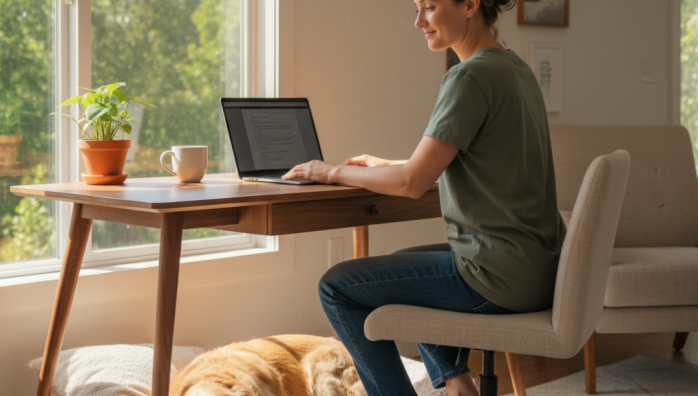Gradual Departures for Anxious Pets
by admin in Pet Care Basics 23 - Last Update November 20, 2025

When I first switched to remote work, I envisioned a blissful new chapter with my rescue dog, Leo. More cuddles, more midday walks—what could be better? The reality, I soon discovered, was a bit more complicated. My constant presence had created a new problem: intense separation anxiety. The moment I grabbed my keys for a quick grocery run, his panic would begin. It was heartbreaking, and honestly, I felt trapped. That’s when I dove into the concept of gradual departures, a method that didn\'t just help; it transformed our relationship and rebuilt his confidence.
Understanding the \'why\' behind the anxiety
Before jumping into solutions, I had to understand what Leo was feeling. From his perspective, my departure wasn\'t just a brief absence; it was a frightening, unpredictable event. The cues were everywhere: me putting on shoes, grabbing my bag, the jingle of keys. Each one was a mini-trigger that built up to his full-blown panic. The goal of gradual departures is to systematically dismantle these triggers and teach your pet that being alone is safe, and most importantly, that you will always come back.
How i implemented gradual departures: a step-by-step guide
Patience is the most important tool you have. This isn\'t a race, and pushing your pet too fast will only set you back. Here’s the exact process I followed with Leo, which you can adapt for your own furry friend.
Step 1: Desensitize the departure cues
For a full week, I focused only on the triggers. Several times a day, I would pick up my keys and then just go sit on the sofa. I\'d put on my coat and then start making dinner. I\'d walk to the front door, touch the handle, and then walk away. At first, Leo was a nervous wreck, but soon he learned that these actions didn\'t always mean I was leaving. I rewarded his calm moments with a quiet, gentle praise or a small treat.
Step 2: Practice \'non-event\' departures
Once the cues were less scary, I started with the act of leaving itself. I\'d open the front door, step outside, close it, and immediately come back in. I did this without any fanfare—no emotional goodbyes or hellos. The goal was to make my coming and going the most boring event of his day. We did this over and over, until he barely lifted his head when he heard the door click.
Step 3: Slowly extend the time
This is where things get personal to your pet\'s tolerance. I started with a 30-second absence. Then a minute. Then two minutes. My rule was to always return *before* he showed signs of anxiety. If I came back to a whining dog, I knew I had pushed too far and would dial it back to a shorter duration for the next few attempts. It felt tedious, but this slow, steady progress is what builds a foundation of trust.
What else helped support the training
Gradual departures were the core of our strategy, but a few other things made a huge difference. I created a \'safe zone\' for him with his favorite comfy bed, a worn t-shirt that smelled like me, and a high-value puzzle toy that he only got when I was practicing my departures. This helped him associate my absence with something positive and engaging. Remember, if your pet\'s anxiety is severe or doesn\'t improve, it\'s always best to consult with a veterinarian or a certified animal behaviorist. What worked for Leo is a great starting point, but professional guidance can be invaluable.














